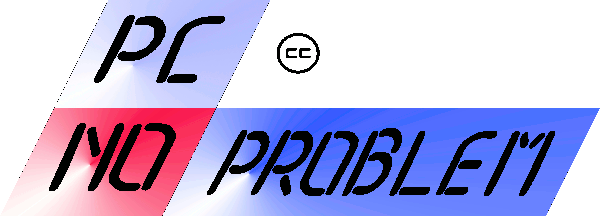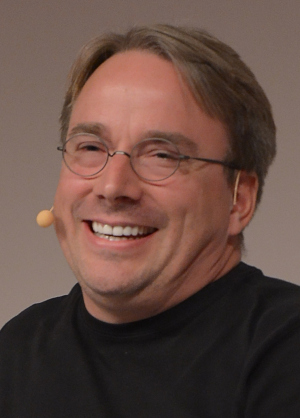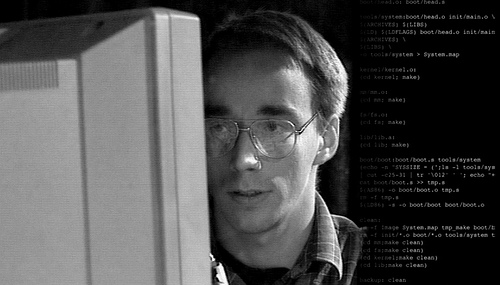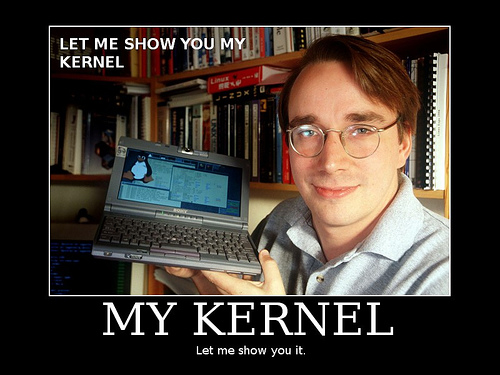LINUS BENEDICTS TORVALDS
 The father of Linux ####
The father of Linux ####
|--> Helsinki Finlandia 28-12-1969
-->| living
History:
Torvalds is the one who started the development of the Linux kernel. The GNU/Linux operating system, obtained by merging Linux with the GNU system, has gone down in history as a valid alternative to commercial closed-license operating systems (such as Microsoft Windows, Mac OS X, Unix); unlike the latter systems, in fact, Linux is free software released under the GPL license (this license is currently considered by the OSI to comply with the rules governing open source), i.e. anyone can access the source code of the operating system, modify it to their liking, use the executable for any purpose and legally copy such software, as required by the GPL license.
Torvalds' popularity began as a result of an academic dispute with Professor Andrew Tanenbaum, who had developed Minix, a Unix-like operating system that could run on a common personal computer, for educational purposes. That operating system was distributed with the source code, but its distribution license prohibited making changes to the code without the author's permission. Other disagreements, between Linus and Tanenbaum, led Linus to think directly about the possibility of creating a sort of Unix for PC, inspired by Minix, but at the same time allowing everyone to get their hands on it. It was this choice that gave rise to the project which, given the free software license adopted, in the space of a few years has brought together hundreds of programmers, who in their spare time delight in updating the Linux code.
At the age of twelve, Linus Torvalds received a Commodore Vic-20 as a gift from his grandfather Leo Toerngvist, a professor of statistics at the University of Helsinki. They threw themselves on it with great vogue. And after a couple of days she churned out her first program in basic: which scrolled endlessly, on the television used as a monitor, the words "Sara is the most beautiful", dedicated to her younger sister. Immediately after, having learned the language of machines in record time, he tried his hand at making a simple video game: a submarine that had to navigate under a stormy sea while avoiding the huge fish that came towards it. He duplicated the game on many audio cassettes and gave them to his schoolmates.
Torvalds began lecturing on Unix in 1990, when he was enrolled in his university's Computer Science School. At first it was a great love. Then Linus realized that Unix had two fundamental problems. In the first place, it had become an exclusively commercial operating system, and this clashed with the rebellious spirit that he had always demonstrated. But above all, it cost too much: $5,000 for the software, $10,000 for the machines on which it ran.
It was therefore necessary to create a dialect of Unix that could also work on home computers, such as the 386 that Linus had bought in those months. In the first months of '91 he had already developed the kernel, the heart, of the new operating system. He decided to make it available to his university colleagues, to see what they thought of it. He then deposited it in the FTP server of the university in the Finnish capital. He had to give it a name. He thought of Freax, which was the contraction of three words that were very important to him, Free, Freak, and Unix. But Ari Lemmke, the server manager, didn't like the name at all. The choice then fell on Linux, which was his nickname at work.
It was the summer of '91. By January 1992, Linux was running on the personal computers of 100 people. However, they began to bombard Linus with e-mails, telling him their impressions and submitting their ideas to improve it. Torvalds then decided to affiliate his creation to the Free Software Foundation's "copyleft" standard. It was a system based on the General Public License, the mechanism that allowed anyone to improve the product, benefiting from the work of others and making their own available to others. Since then, Linux's journey has become an unprecedented success.
Torvalds currently lives in Santa Clara, California, with his wife Tove (six-time national Karate champion in Finland), he worked until spring 2003 for the Transmeta Corporation and then took care of the full-time coordination of the group of programmers who develop the Linux kernel on behalf of the OSDL (Open Source Development Lab), a research project funded by industries that have based part of their business on GNU/Linux, such as Computer Associates, Fujitsu, Hitachi, Hewlett-Packard, IBM, Intel, NEC. In 2006 he was selected by Time Europe Magazine as one of the Heroes of 2006.
Although Linus Benedict Torvalds tries not to appear much in public and doesn't like to be talked about, given his unsociable and rather rough character, as well as his rather radical and pragmatic ideas towards free software, he often finds himself involved in heated academic discussions and disputes. During a talk at TED Conference, he said, "I didn't launch Linux as a collaborative project. I did it just for myself (...) I made it public, but I had no intention of using the open source methodology. I just wanted to get feedback on my work."
Since 2005, Torvalds has also authored Git, distributed code version control software. Git is a very important platform for the development of free SW that allows a very effective collaboration between developers. This project was also started for practical reasons, as it was dissatisfied with other similar projects.
Sources:
https://it.wikipedia.org/wiki/Linus_Torvalds
http://www.caffeeuropa.it/attualita/19linus.html
|
Linus Torvalds 2014 |
Torvalds student |
Torvalds with a little Linux PC |





